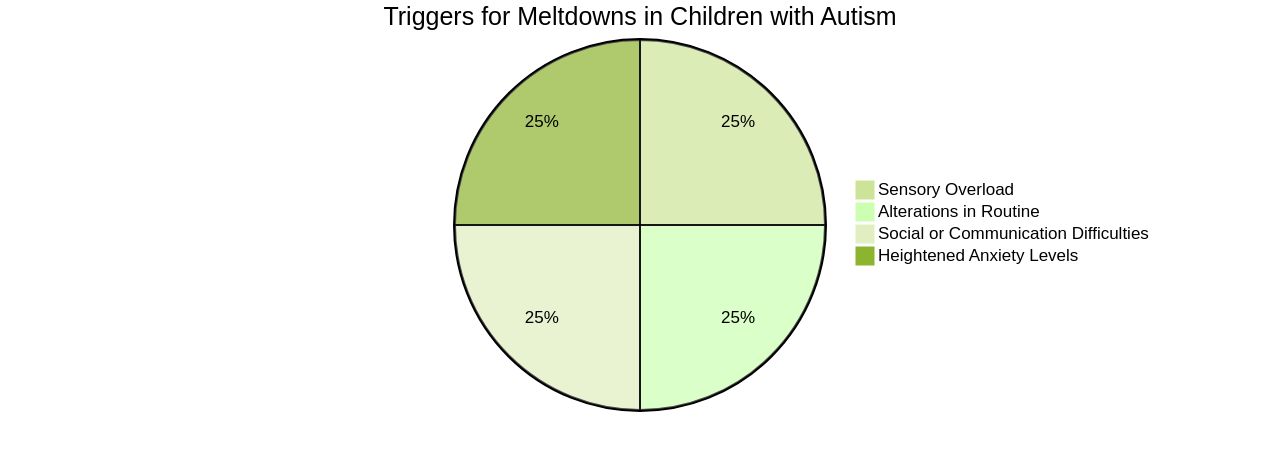Introduction
Understanding Autistic Meltdowns
Autistic meltdowns are intense emotional and sensory reactions experienced by individuals with autism when they feel overwhelmed. Unlike tantrums, these meltdowns are not acts of manipulation but rather responses to sensory overload and other challenges associated with autism.
In this article, we will explore the distinct characteristics of autistic meltdowns, differentiate them from tantrums, and delve into the causes behind these intense reactions. We will also provide strategies for parent advocates to support their children during meltdowns and offer additional resources and support to help navigate this challenging aspect of autism. Join us as we empower parent advocates with the knowledge and tools necessary to ensure the well-being of their children.
Understanding Autistic Meltdowns
Autistic meltdowns, unlike tantrums, are intense emotional and sensory reactions that individuals with autism experience when they feel overwhelmed. These are not acts of manipulation but responses to sensory overload, communication difficulties, or other autism-related challenges.
Autistic individuals often face societal and psychological challenges as they transition into adulthood. They may struggle with unspoken social norms, sensory sensitivities, and managing relationships.
These challenges often lead to a higher prevalence of anxiety and depression within this group. Masking or social camouflaging is a common coping mechanism adopted by many autistic individuals.
It's a survival response triggered by societal stigmatization of autism, leading to the adoption of behaviors that make them appear nonautistic. Autism is not devoid of strengths, though.
Autistic individuals often exhibit a strong sense of justice and fairness, the ability to withstand social pressure, heightened emotional capacity, attention to detail, and deep expertise in specific areas. Understanding these factors is crucial for parent advocates, as it equips them with the knowledge to provide effective support and strategies to help their children navigate these challenging situations. As such, it's essential that services for autistic families are improved through better training and understanding of autism's positive aspects. Moreover, it's vital to acknowledge that autistic adults, like everyone else, have therapeutic needs that can be addressed with minimal additional training and a willingness to learn on the part of practitioners. It's important to not just refer them to specialists but to understand their specific needs and establish a trusting relationship.
Differentiating Between Tantrums and Autistic Meltdowns
In assisting children with autism, particularly during meltdowns, it becomes essential to discern between typical tantrums and autistic meltdowns. Tantrums are often deliberate attempts to draw attention or manipulate a situation, while autistic meltdowns are involuntary reactions to sensory overload or other triggers.
By understanding the distinctive signs and patterns of these two behaviors, advocates can tailor their responses and provide the support necessary during meltdowns. It's crucial to note that autism typically manifests by age 3, and early diagnosis and intervention significantly increase the likelihood of receiving services.
However, the symptoms may not fully show until social demands surpass a child's coping abilities. Misunderstandings about autism persist, including misconceptions about vaccines, parenting styles, or nutrition causing the condition.
In fact, research indicates a potential genetic basis for autism, with ongoing studies examining how certain conditions might unexpectedly affect brain development, resulting in autism. Moreover, the prevalence of autism has risen dramatically, from 1 in 125 in 2004 to 1 in 36 in 2023. Certain barriers, such as stigma, lack of access to healthcare services, and language difficulties, may delay the early identification of autism in children of color and Hispanic children. Therefore, understanding and addressing these issues is a crucial part of supporting children with autism and their families.

Causes of Autistic Meltdowns
Catalysts for meltdowns in children with autism are varied, encompassing sensory overload, alterations in routine, social or communication difficulties, or heightened anxiety levels. Recognizing the triggers is crucial for those supporting and advocating for the children.
Enhanced understanding of the root causes can aid in mitigating these triggers, fostering an environment that encourages emotional regulation and wellness. For instance, reducing noise with headphones, moving to quieter spaces, or utilizing white noise can alleviate sensory overload.
It is also crucial to remember that certain behaviors such as wandering, often perceived as a 'problem' or 'challenging' behavior, are a significant public health concern, with 17% of cases resulting in death and 38% carrying a higher risk of bodily harm. Furthermore, it is imperative to consider the mental health of the children.
Up to 79% of autistic adults met diagnostic criteria for a mental health condition, including depressive, anxiety, and eating disorders. Any sudden change in behavior could be a sign of a mental health issue. Therefore, it is essential to be attentive to these changes and provide the necessary support. Finally, it is crucial to note that autistic people often find the medical environment overwhelming due to sensory overload, making it harder for them to seek care. By understanding their specific needs and creating a supportive environment, we can ensure their well-being and emotional regulation.

Strategies for Parent Advocates
Supporting children during autistic episodes is an integral part of a parent advocate's role. Key strategies include:
1.
Prioritizing Safety: During an episode, the child's safety and the safety of others should be paramount. Advocates can create a safe environment where the child can express their emotions without posing risk to themselves or others.
- Establishing a Soothing Routine: A routine involving sensory activities, such as deep pressure input or calming music, can help children with autism manage their emotions and prevent episodes.
- Recognizing and Preventing Escalation: Early signs of an episode can be identified and strategies implemented to prevent escalation, such as removing the child from overwhelming situations, providing visual aids, or employing communication strategies to help them express their needs and feelings.
- Maintaining Composure: Advocates should remain calm during an episode. Demonstrating a composed demeanor can help the child regulate their emotions and feel secure. Techniques such as deep breathing, calming strategies, and seeking support from other caregivers or professionals can help manage the advocate's emotions during challenging times. Implementing these strategies can empower parent advocates to provide necessary understanding and support during autistic episodes, fostering an atmosphere of safety, connection, and emotional well-being.

Additional Resources and Support
As parent advocates strive to understand and manage meltdowns associated with autism, the expansion of their support network and resource pool becomes critical in dealing with autistic meltdowns. Engaging in online communities and support groups can help individuals with autism feel a sense of belonging and offer practical strategies drawn from shared experiences to manage autistic meltdowns. Specialized advice and personalized support, including for individuals experiencing autistic meltdowns, are provided by professionals like therapists and behavior analysts, while educational materials are there to deepen understanding.
A recent study highlighted the significance of resources as many parents seek support for children with conditions like ADHD, anxiety, depression, and other conditions, emphasizing the need for these resources to prevent autistic meltdowns. Furthermore, services such as www.asd.media, which provides unlimited digital access for a subscription fee of $130 per year or $5-7 per month, can be a valuable tool for parent advocates. This platform equips advocates with a wealth of resources, including materials for autism-focused professionals and organizations.
The data reveals that boys have a diagnosis rate of autism that is over three times higher than that of girls, highlighting the need for support strategies tailored to different genders, especially in the case of autistic meltdowns. Furthermore, the increase in developmental disabilities from 7.40% to 8.56% in children aged 3-17 years between 2019-2021 highlights the urgency for more support and resources, especially for those experiencing autistic meltdowns. The process of comprehending and handling autistic meltdowns is an ongoing journey, progressing with every fresh understanding and resource uncovered.

Conclusion
Understanding autistic meltdowns is crucial for parent advocates supporting children with autism. These meltdowns are not manipulative acts but involuntary responses to sensory overload and other challenges.
Differentiating between tantrums and meltdowns helps advocates provide appropriate support. Meltdowns in children with autism can be triggered by sensory overload, changes in routine, social or communication difficulties, or heightened anxiety levels.
By recognizing these triggers, advocates can create an environment that fosters emotional regulation and well-being. Parent advocates can empower themselves by implementing key strategies during meltdowns.
Prioritizing safety, establishing soothing routines, recognizing early signs of escalation, and maintaining composure are essential. These strategies contribute to a sense of safety, connection, and emotional well-being.
Expanding the support network and accessing additional resources is crucial for parent advocates. Online communities, support groups, educational materials, therapists, behavior analysts, and platforms like ASD.Media offer valuable resources and personalized support. In conclusion, understanding and managing autistic meltdowns is a continuous journey for parent advocates. By differentiating between tantrums and meltdowns, recognizing triggers, implementing strategies, and accessing additional resources and support, advocates can ensure the well-being of their children with autism. With each new insight gained and resource discovered, we can provide better support for individuals on the autism spectrum. Together, we can create an inclusive and supportive environment for individuals with autism to thrive.




